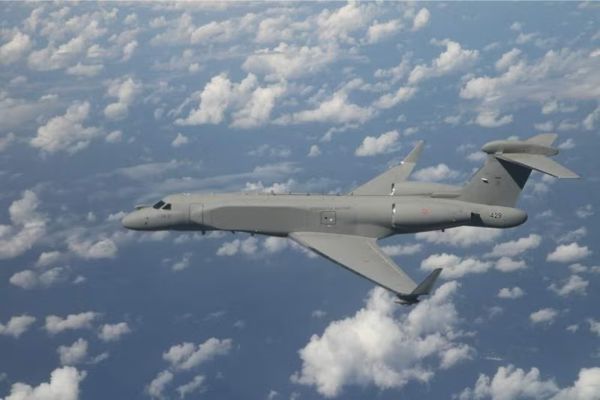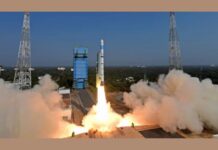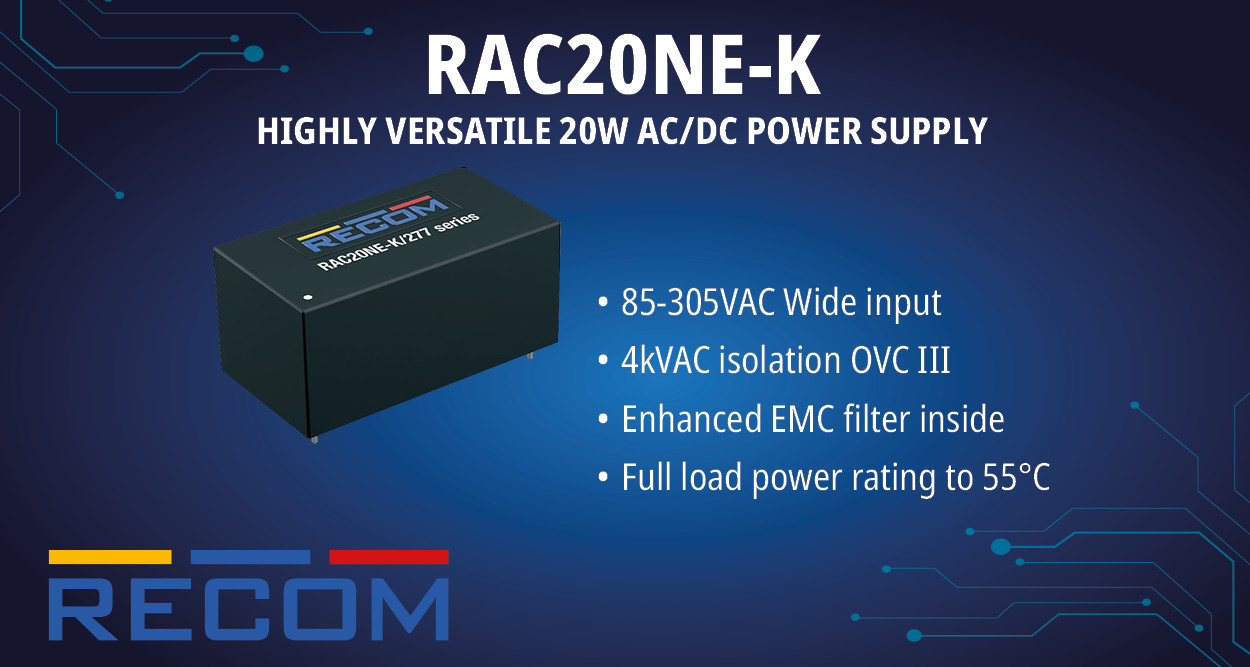The global special mission aircraft market size is evaluated at USD 18.63 billion in 2025 and is anticipated to reach around USD 30.53 billion by 2034, growing at a notable CAGR of 5.64 % from 2025 to 2034. indicating robust demand across both military and civil sectors. Key factors driving growth include increasing investment in defense modernization programs, technological advancements, and rising concerns over border security and asymmetric threats.
The Special Mission Aircraft (SMA) market is a rapidly expanding segment within the global aerospace and defense industry. These aircraft, configured to perform a variety of mission-critical tasks, play a vital role in enhancing national security, humanitarian assistance, and intelligence operations. Special mission aircraft are designed or modified to carry out specific roles such as Intelligence, Surveillance, and Reconnaissance (ISR), maritime patrol, airborne early warning, search and rescue (SAR), electronic warfare (EW), and medical evacuation. As geopolitical tensions rise and defense operations grow more complex, the demand for these multi-role and highly customizable aircraft continues to grow worldwide.
Aircraft Market Size and Forecast 2024 to 2034
“The global aircraft market size was estimated at USD 426.42 billion in 2024 and is projected to hit around USD 601.51 billion by 2034, growing at a CAGR of 3.50% during the forecast period 2024 to 2034”
Technological Advancements
Modern special mission aircraft are being equipped with cutting-edge technologies to meet evolving defense requirements. AI and machine learning are now integral for autonomous decision-making, object detection, and data fusion. Sensor fusion systems integrating infrared, radar, electro-optical, and signal intelligence (SIGINT) sensors enable enhanced situational awareness. Additionally, new SMA platforms are being designed for modularity, allowing them to quickly switch between roles such as medevac, command and control, or ISR. Low observable technologies and reduced radar signatures are also being developed to enable stealth operations, especially in hostile or denied environments.
Regional and Country-Level Insights
North America, led by the United States, remains the dominant region, accounting for approximately 40% of global market share. The U.S. Department of Defense continues to procure and upgrade aircraft such as the RC-135 Rivet Joint, E-2D Hawkeye, and P-8A Poseidon. Unmanned systems like the MQ-9 Reaper and RQ-4 Global Hawk are also widely used for ISR missions.
In Europe, countries like Germany (USD 609 million), the United Kingdom (USD 517 million), France (USD 283 million), and Italy (USD 265 million) are heavily investing in electronic warfare systems and ISR modernization. The ongoing Future Combat Air System (FCAS) initiative also contributes to regional market growth.
Asia-Pacific is witnessing strong momentum, especially in countries like China (USD 1.06 billion), India (USD 283 million), Japan (USD 325 million), and South Korea (USD 236 million). India is focusing on maritime surveillance and border ISR with platforms like the P-8I and C295, while China is building up capabilities in the South China Sea using indigenous and imported ISR platforms.
Russia maintains a strong position with an estimated market value of USD 477 million, focusing on airborne early warning and electronic countermeasure aircraft. Meanwhile, the Middle East and Africa, with a combined market size of USD 205.09 million in 2024, are increasingly investing in surveillance aircraft to address cross-border conflicts, terrorism, and maritime threats.
| Country | Market Size (2024, USD Million) | Projected CAGR (%) | Key Focus Area |
| United States | 7,040.00 | 5.60% | ISR, UAVs, Fleet Modernization |
| Russia | 477 | 2.50% | ELINT, Early Warning Aircraft |
| Germany | 609 | 1.20% | Electronic Warfare, ISR Upgrades |
| United Kingdom | 517 | 1.80% | Surveillance and Multi-role Ops |
| France | 283 | 0.20% | Surveillance, Multi-role Aircraft |
| Italy | 265 | 0.40% | Multi-role ISR Aircraft |
| China | 1,060.00 | 4.00% | Maritime Surveillance, Border Patrol |
| India | 283 | 6.30% | Coastal & Border Surveillance |
| Japan | 325 | 3.00% | Airborne Early Warning, ISR |
| South Korea | 236 | 3.60% | Electronic Warfare, Recon |
Key Market Drivers
The primary catalyst for market growth is the need for rapid and reliable airborne intelligence, especially for border and maritime surveillance. Nations are investing heavily in aerial systems that can detect, track, and respond to threats in real time. The increasing use of unmanned aerial vehicles (UAVs) for ISR and electronic warfare operations is also pushing the market forward, as these platforms offer cost-effective, flexible, and risk-free alternatives to manned missions. Another significant trend is the modernization and life-extension of aging fleets, where older surveillance aircraft are retrofitted with advanced systems instead of being replaced outright.
Competitive Landscape
The global SMA market is characterized by fierce competition and rapid innovation. Leading manufacturers include Northrop Grumman, Lockheed Martin, Boeing, Airbus, Leonardo S.p.A., Bombardier, Textron Aviation, and Israel Aerospace Industries (IAI). These companies are developing advanced platforms with integrated communication suites, multi-mission payloads, and real-time data analytics.
Noteworthy developments include the adoption of Airbus’s C295 ISR variant by NATO members, IAI’s rollout of the ELI-3001 SIGINT platform, and L3Harris Technologies’ enhancements to the King Air 350ER fleet. Strategic collaborations, defense offset programs, and joint ventures are playing a critical role in accelerating technology adoption across regions.
Special Mission Aircraft Market Top Companies
- The Boeing Company (US)
- Lockheed Martin (US)
- Dassault Aviation SA (France)
- Textron Aviation (US)
- Northrop Grumman Corporation (US)
Market Challenges
Despite its growth trajectory, the SMA market faces several challenges. High procurement and maintenance costs pose financial barriers, especially for developing countries. Integration of advanced systems into legacy airframes can be technically complex and time-consuming. Regulatory hurdles related to airworthiness and cybersecurity also require careful navigation. Additionally, reliance on sensitive electronics exposes platforms to electronic jamming and data spoofing, necessitating robust countermeasures.
Future Outlook
Looking ahead, the SMA market is set for a transformative decade. By 2034, it’s expected that over 75% of new platforms will be equipped with modular systems capable of switching between ISR, SAR, and medevac missions on the fly. The rise of optionally piloted aircraft and UAVs will redefine the tactical ISR landscape. Additionally, integration with satellite constellations, ground control stations, and real-time cloud-based analytics will enhance situational awareness and mission success.
Defense ministries worldwide are expected to increase AI spending in aviation by 15% annually, specifically for autonomous ISR applications. Joint command platforms that integrate land, sea, air, and space data will emerge as the new norm in multi-domain warfare.
Recent Developments and Investments in the Special Mission Aircraft Market
Textron Aviation’s Expansion into Special Missions
In October 2024, Textron Aviation unveiled a new line of versatile aircraft tailored for special mission roles, including Intelligence, Surveillance, and Reconnaissance (ISR) operations. This initiative addresses the growing demand for specialized aircraft and emphasizes cost-effective solutions for military applications.
Anduril and Archer’s Hybrid Military Aircraft Collaboration
In December 2024, defense contractor Anduril Industries partnered with Archer Aviation to develop a hybrid-power vertical takeoff and landing (VTOL) aircraft for military use. This collaboration aims to address challenges related to climate change, fuel logistics, and battlefield efficiency. Archer raised $430 million in equity capital to support this venture.
Embraer’s Defense Jet Sales Initiatives in Mexico
Brazilian aerospace company Embraer is actively pursuing defense jet sales in Mexico, highlighting its Super Tucano and C-390 aircraft. The company conducted demonstration flights of the C-390 and is in discussions with the Mexican government. Additionally, Embraer secured a $750 million order for 20 E2 jetliners from Mexicana, a military-run airline.
Diamond Aircraft’s DA62 MPP Acquisitions
In July 2024, Greece signed a contract to purchase three DA62 MPP (Multi-Purpose Platform) aircraft from Diamond Aircraft for €23.3 million. These aircraft will serve as air operations centers for firefighting, search and rescue, and aerial surveillance. Deliveries are expected to be completed by the third quarter of 2025.
Joby Aviation’s eVTOL Deliveries to the U.S. Air Force
Joby Aviation announced plans to deliver two next-generation electric vertical takeoff and landing (eVTOL) aircraft to MacDill Air Force Base in Florida in 2025. This delivery is part of a contract potentially worth up to $131 million, aiming to support operations at the base, which houses the U.S. Special Operations Command and U.S. Central Command.
The Full Study is Readily Available | Download the Sample Pages of this Report@ https://www.precedenceresearch.com/sample/6127

















